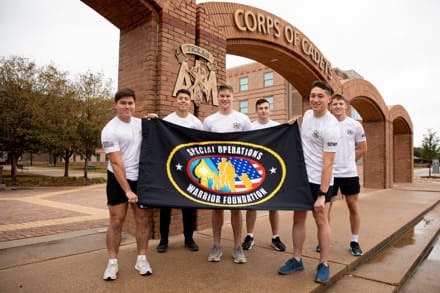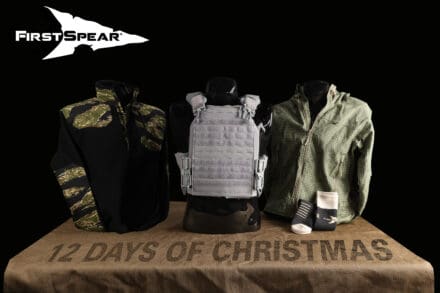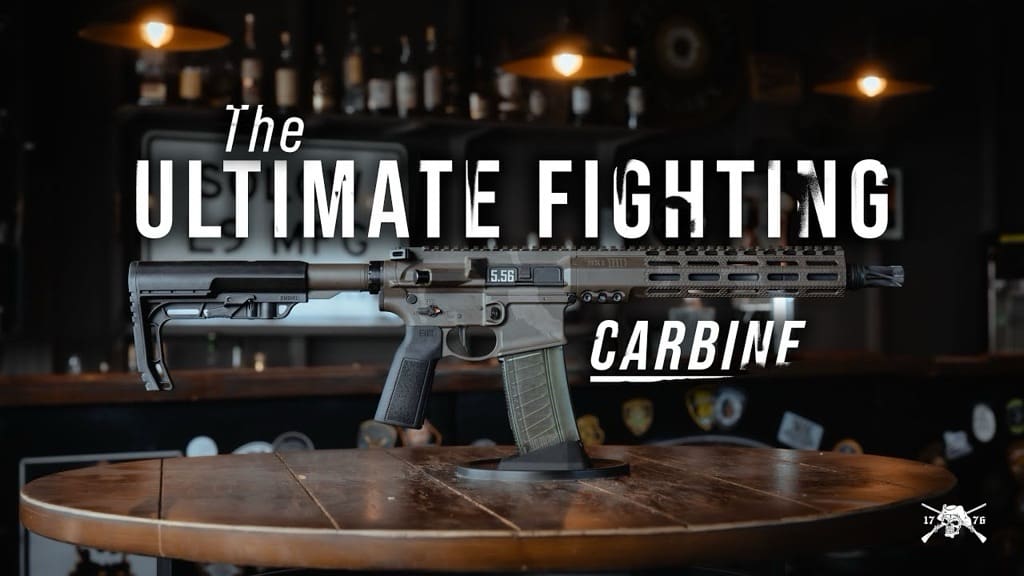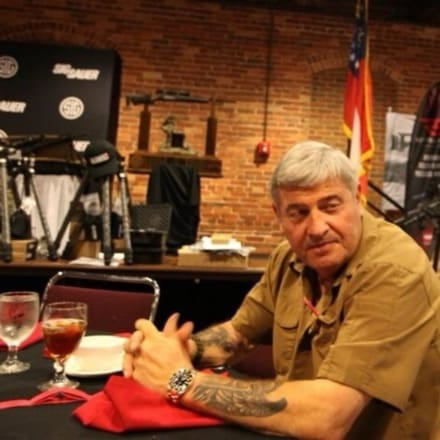Six-man Project Atlas Rucks team to depart Texas A&M University’s campus early Dec. 11 for hike through the Colorado mountains.

BRYAN-COLLEGE STATION, Dec. 9, 2024 — Six members of Texas A&M University’s Corps of Cadets will participate in a 1,000-mile, 10-day ruck march across Colorado this month.
The ruck march, a fundraiser for the Special Operations Warrior Foundation, began as a service initiative known as Project Atlas Rucks in 2017 by members of the Corps’ Company H-1.
Following the Corps’ consolidation of Company H-1 at the conclusion of the 2021-2022 school year, Project Atlas did not occur in the fall 2022 semester. The efforts were revitalized in the fall of 2023 when eight cadets from Company P-2, several of whom were former members of Company H-1, revived the efforts.
The term “ruck march” is in reference to the rucksack carried by the cadets that holds their clothing, food and water.
This year’s team is a group of five seniors and one sophomore cadet: Nico Barerra of Sugar Land; Zack Hampton of Austin; Max Hulen of Charleston, South Carolina; Christian Lange of Austin; Zach Lehmann of Keller; and Matthew Reckleben of Tucson, Arizona. Four of the team’s members participated in last year’s ruck, which exceeded the project’s $15,000 fundraising goal by nearly $500.
“It’s such a great opportunity to take part in an event like this and to do what we can to give back to the heroes who sacrificed so much for our freedom and their families. It’s truly a blessing to continue this tradition that was started years ago,” said Lehmann, Project Atlas’ co-lead.
This year’s trip will begin early Dec. 11, when the team will drive from Texas A&M’ to Steamboat Springs, Colorado. “We wanted to select an area that would challenge us with high elevation and cold weather during the ruck. Our route will pass through several landmarks, including Camp Hale national monument as well as the towns of Vail and Leadville,” Lehmann said.
The team has a goal to raise $15,000 for the SOWF over the course of the journey.
“These cadets have selflessly elected to spend the first part of their winter breaks serving a very worthy cause. They’re exemplifying the Core Values and leadership development that the Corps experience is rooted in. We’re proud of this year’s group for keeping such a special tradition going and we hope they know that the entire Corps is supporting them along their way,” said Lt. Gen. Chip Utterback, Commandant of the Corps of Cadets.
The team is scheduled to complete its 10-day ruck march on Dec. 22 in Buena Vista, Colorado.
To date, Project Atlas has raised a cumulative $89,436 for the SOWF, which benefits children of military special operators who have died or been injured while serving our nation. The foundation ensures that those children have access to comprehensive educational support, from primary to post-secondary school.
“This ruck is significant to the Special Operations Warrior Foundation because many of the fallen Special Operations personnel whose children we support were A&M graduates. This ruck event honors their sacrifice, while helping fund the education of their children,” said Sean Joseph Corrigan, executive vice president of the SOWF.
“The commitment, sacrifice, and effort that goes into the Project Atlas Ruck march align with what drives Special Operations Forces (SOF). The event honors those who made the ultimate sacrifice and pays tribute to the families who lost their SOF Operator. Texas A&M should take great pride in those who participate in this event. It is uniquely Aggie,” continued Corrigan said.
A link to give to the Project Atlas campaign can be accessed here.
Regular updates about this year’s Project Atlas Ruck march will be posted on the @aggiecorps Instagram, Facebook and Twitter, and @projectatlasrucks on Instagram and Facebook.
By Robin Nelson, Texas A&M University Corps of Cadets



























































































































